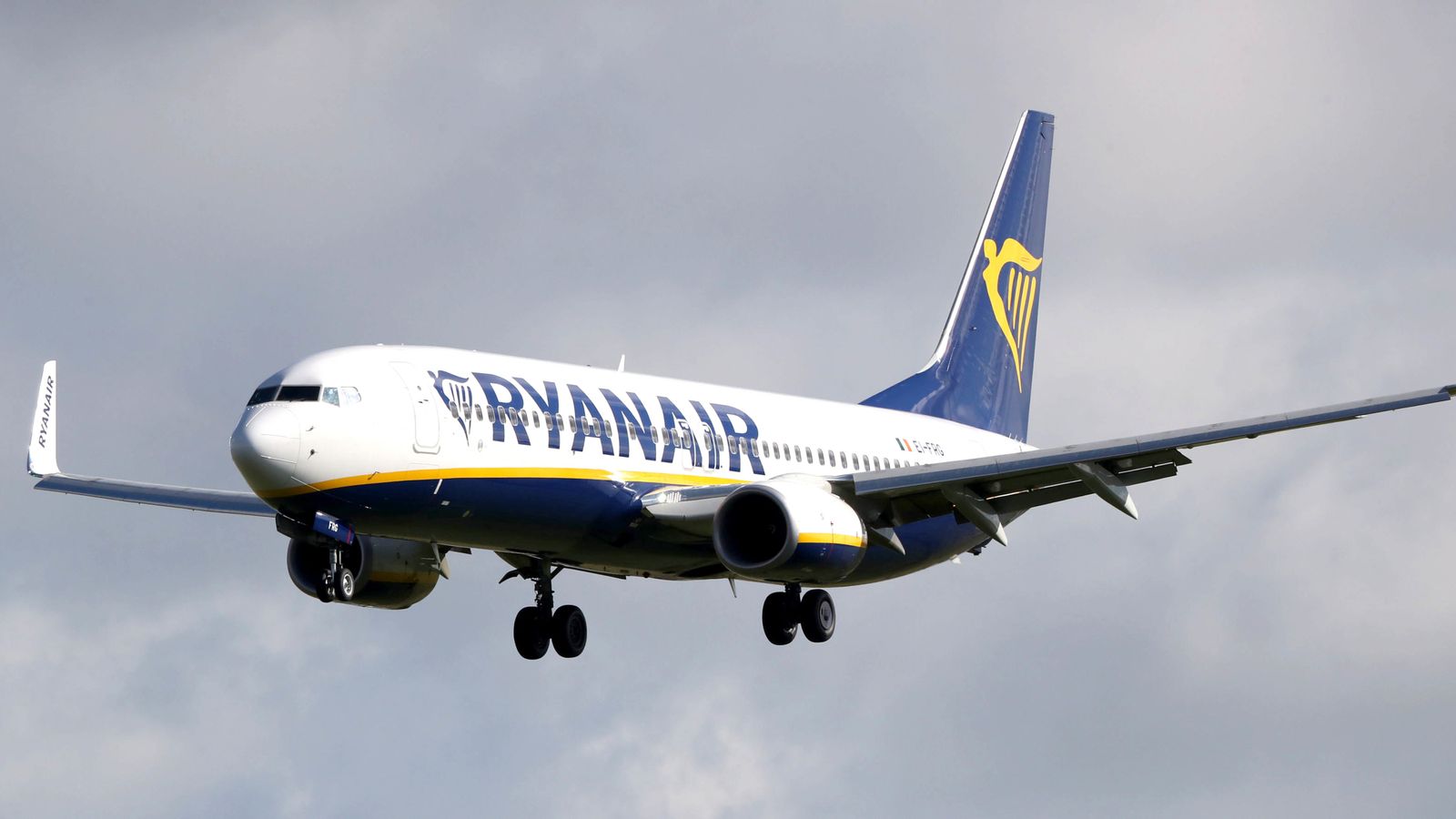Ryanair has raised its passenger forecast following a recovery in summer bookings but reported a sharper first quarter loss, saying the coronavirus crisis “wreaked havoc” on Easter demand.
Europe’s largest airline by passenger numbers said it now expected to fly between 90 and 100 million people in its current financial year to the end of March 2022.
That was up from an earlier forecast of 80-100 million as it benefitted from a boost to summer holiday bookings and eyed a much improved winter season ahead.
It credited the improved guidance on a COVID-19 vaccine-led pick up in demand across EU nations – following in the footsteps of a recovery in the UK – though it refused to extend the range of its forecasts beyond the current year given continuing uncertainty.
Please use Chrome browser for a more accessible video player
Ryanair said a net loss of €273m (£234m) between April and June, up from the €185m red figure in the same period last year, reflected a disastrous Easter for travel though demand had picked up through May and June.
It carried 8.1 million passengers over the first quarter – up from just 0.5 million in the same three months of 2020 as the pandemic gathered speed.
While total revenue rose to €370m, thanks in part to additional charges on passengers for things like priority boarding and seat reservations, its bottom line was hurt by a surge in operating costs to €675m.
Ryanair chief executive, Michael O’Leary, said: “COVID-19 continued to wreak havoc on our business during Q1 with most Easter flights cancelled and a slower than expected easing of EU Govt. travel restrictions into May and June.
“Significant uncertainty around travel green lists (particularly in the UK) and extreme Govt. caution in Ireland meant that Q1 bookings were close-in and at low fares.”
He added: “Following the 1st July rollout of EU digital Covid certificates (and the relaxation of the UK’s quarantine rules) for fully-vaccinated persons, our group has seen Q2 bookings recover strongly (albeit at low fares).
“We believe that FY22 traffic has improved to a range of 90m to 100m (previously guided at the lower end of an 80m to 120m passenger range) and (cautiously) expect that the likely outcome for FY22 is somewhere between a small loss and breakeven.
“This is dependent on the continued rollout of vaccines this summer and no adverse COVID variant developments.”






















